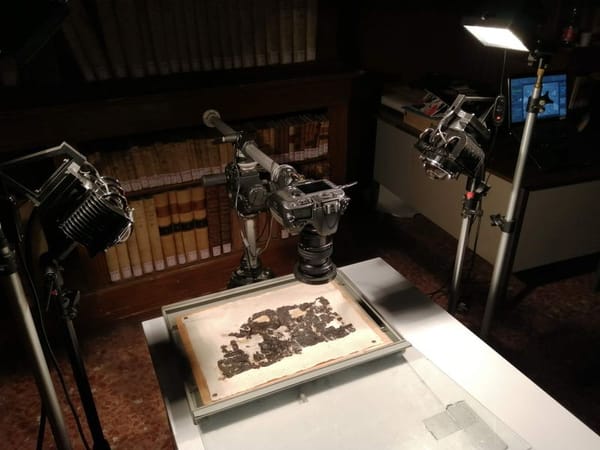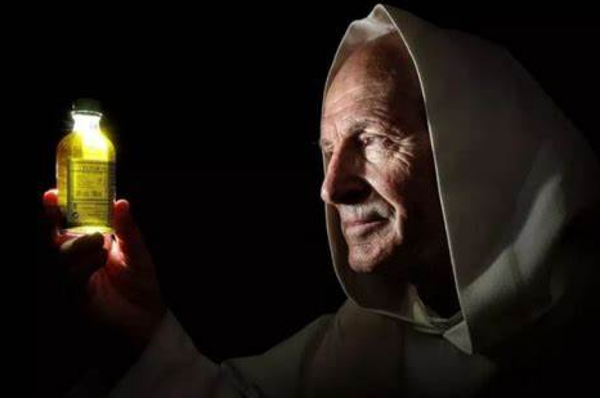These scientists thought LSD would help them talk to dolphins

From The Chronicle: "In the 1930s, the married anthropologists Gregory Bateson and Margaret Mead had seen themselves as scientists seeking to expand the accepted limits of “normal” human behavior, communication, and consciousness. By the 1940s they came to believe that their project could help ensure the survival of humanity itself. By 1963 Bateson and Mead were divorced. But Bateson continued to see himself as pushing the boundaries of science to prevent feedback loops of conflict, which led him to the psychoanalyst John C. Lilly’s Communications Research Institute on St. Thomas in the U.S. Virgin Islands. Lilly’s résumé was impeccable: degrees from Caltech and Dartmouth, a stint teaching at Penn, previously the head of a government research lab at the NIH. For reasons that remained somewhat mysterious, he had managed to persuade NASA to fund his efforts to teach dolphins how to speak English."
What it's like to live on one of the US Navy's nuclear-powered submarines

From Vanity Fair: "Under cover of darkness, I boarded a Navy vessel at a heavily guarded military base along the Eastern Seaboard. The location and time of departure, as well as the direction and distance of travel, were unknown to me. Adding to the sense of secrecy, a towering sailor in camouflage stood in the rain, examining my belongings for electronics that might leave a digital trail an adversary could intercept and exploit. Buffeted by strong winds and high Atlantic seas, the support ship sailed through the night for more than 15 storm-tossed hours toward a destination somewhere off the continental shelf. Just after dawn, a sleek, inky object appeared in the distance, right above the waterline. It was the protruding bridge of what sailors call a “boomer”—a submarine armed to the gills with nuclear missiles—which is considered the most lethal, stealthy, and survivable weapon in America’s strategic arsenal."
An ancient story about the Seven Sisters may have survived from 100,000 years ago

From IFLScience: "In the northern hemisphere from October to March, you can look up and see the Pleiades, also known as the Seven Sisters. The star cluster is in the constellation of Taurus, and made up of over 1,000 stars, but the brightest of the stars are hot blue luminous stars which formed around 100 million years ago. These stars, like so many others, have myths attached to them by ancient cultures around the world. An intriguing aspect to this is how similar the stories are, and why the stories all mention seven sisters, when it is six stars that appear bright to the naked eye. In Greek mythology, the Seven Sisters are the daughters of Atlas, who transformed them into stars so they wouldn't be raped by Orion the hunter. Indigenous Australian versions of the tale, meanwhile, tell similar stories of a hunter or young man who try and chase the female Pleiades. Similar myths explaining that there are seven sisters but one is missing are found in African, Asian, Indonesian, and Native American cultures."
Editor's note: If you like this newsletter, please share it with someone else. And if you really like it, perhaps you could subscribe, or contribute something via my Patreon. Thanks for being a reader!
In the 1800s Paris had a network of clocks powered by compressed air

From Amusing Planet: "When French-born but London-based civil and electrical engineer, Jules Albert Berly, traveled to Paris for the 1881 International Exposition of Electricity, he saw many wonderous exhibits such as incandescent lamps, the Théâtrophone, the electric tramway, Graham Bell’s telephone, an electrical distribution network, an electric boat and many more fascinating cutting-edge technology of the time. But the thing that captivated him the most did not run on electricity. Berly was entranced by a system of clocks that stood on iron pillars in the squares, at the corners of streets, and in other conspicuous positions about the city, as well as in hotels, each keeping—what was unusual in that age—accurate time. These remarkable timekeepers were not powered or regulated by electricity, but by compressed air that was sent from a central station through wrought iron pipes to all public clocks operated in this fashion."
The Harvard body-snatching case, and the strange economy of human remains

From The Cut Price Guignol: "In early 2020, Kat MacLean, an artist and small business owner from Salem, Massachusetts, posted a picture of one of her creations to Instagram. In the three years that followed, this picture would serve as the first public hint of an almost unbelievable story of a body-snatching, bone-selling, corpse-trafficking conspiracy, and the ineffective laws governing the protection of human remains in the USA. MacLean’s art mostly focused on creepy dolls – babydoll heads served on a platter, dolls with bloodied hands and wild smiles, the usual, run-of-the-mill small-scale horror art. She ran Freaks, Antiques, and Uniques, a pop-up market for similar oddities in Salem, Massachusetts, as well as selling her creations through various platforms online. And it was one of these creations that kicked off this bizarre story."
This German teenager has been living on trains for over a year and a half
:max_bytes(150000):strip_icc()/461232139-56a3ad643df78cf7727e8e2a.jpg)
From Metro UK: "Many people love trains, but do they love them as much as German teenager Lasse Stolley? The 17-year-old has been living on trains for over a year and a half and says he has no plans to change his lifestyle. Lasse travels 600 miles a day throughout Germany aboard Deutsche Bahn trains, travelling first class, sleeping on night trains, having breakfast in DB lounges and taking showers in public swimming pools and leisure centres, all using his unlimited annual railcard. The self-employed coder technically has no fixed abode, and chronicles his adventures regularly on his blog, Life on the Train. "If I feel like travelling to the sea, I take the train north in the morning," he says. "If I long for the hustle and bustle of the big city, then I look for a connection to Berlin or Munich. Or I take the express train to the Alps for a hiking trip."
This 1930s Art Deco motorcyle could reach top speeds of 100 miles per hour
With its 1,200-cc, 40-brake horsepower, in-line four-cylinder engine, the 1930 Henderson Model KJ Streamline could exceed 100 mph, also being a unique and beautiful example of Art Deco design. pic.twitter.com/HLGeWn4LYm
— Massimo (@Rainmaker1973) March 4, 2024
Acknowledgements: I find a lot of these links myself, but I also get some from other newsletters that I rely on as "serendipty engines," such as The Morning News from Rosecrans Baldwin and Andrew Womack, Jodi Ettenberg's Curious About Everything, Dan Lewis's Now I Know, Robert Cottrell and Caroline Crampton's The Browser, Clive Thompson's Linkfest, Noah Brier and Colin Nagy's Why Is This Interesting, Maria Popova's The Marginalian, Sheehan Quirke AKA The Cultural Tutor, the Smithsonian magazine, and JSTOR Daily. If you come across something interesting that you think should be included here, please feel free to email me.


